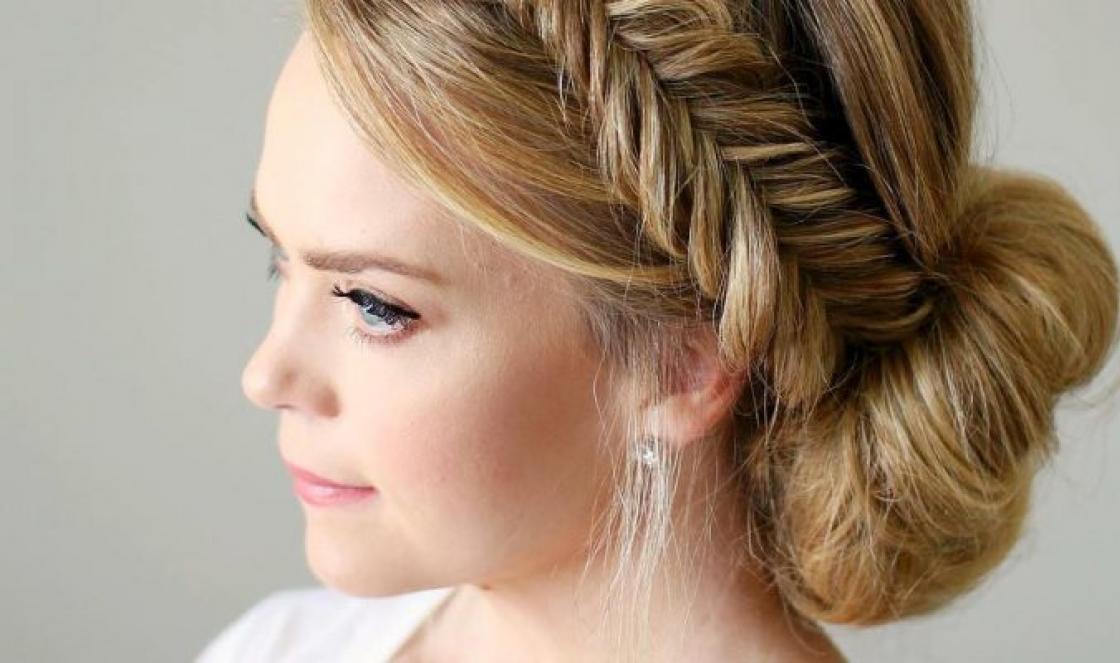If you have never sculpted a turtle from plasticine, it is never too late to start. Why a turtle, simply because, in our opinion, this craft does not require any special knowledge and abilities. In general, workshops on plasticine modeling can help you sculpt even more complex figures, such as a dinosaur or a horse. A master class on sculpting a turtle will show you all the steps with detailed description and photo. So, let's find out how to make a turtle from plasticine.
1. Set aside the colors of plasticine we need. In this craft we will use regular plasticine. Required colors: black, white, green and brown.
2. Cut a small part from a piece of green plasticine and make four balls from it for the legs, one for the plasticine and one for the head. As you can assume, these are just blanks for our future parts of the craft.

3. After this, prepare two small balls of white plasticine and two even smaller balls of blue plasticine. These are blanks for the turtle's eyes.

4. Roll a brown plasticine ball.

5. Take green plasticine and cut it into pieces. We make small balls from the prepared green pieces. The number of these balls is approximately 13-15 pieces, depending on the size of the ball from the 4th point. The larger the ball, the more we make balls.

6. Knead the brown ball and make a shell out of it for our turtle. The shape of the shell should resemble half a walnut shell.


7. The green balls that we made earlier must be flattened and stuck over the entire upper part of our shell.

8. Attach the turtle’s head to the body.

9. Attach a small tail to the back and eyes to the head. Use a plasticine knife to make the mouth and nostrils. We also make small cuts on the head and neck.

10. Now we take the four balls that we made in step No. 2 and make legs for the turtle out of them.

11. Attach the legs to the body. Our cute turtle is ready!

The final craft. Photo 1.

The final craft. Photo 2.

The final craft. Photo 3.
Turtles are very amazing and beautiful creatures. Some species of them inhabited our planet even before dinosaurs. Today we invite you and your child to make a turtle out of plasticine. To create such a craft, you do not need any special modeling skills. Even a beginner can do the technique of creating it.
First, let's prepare a few tools and basic material for modeling:
- plasticine;
- pen;
- stack;
- toothpick.

How to make a turtle from plasticine
Step 1. From plasticine of white, yellow and brown tones we create a mass for sculpting the base of the animal. 
Knead the plasticine thoroughly until the mass is homogeneous. Roll into a ball. We divide it into two parts. First we give it a rounded shape, and with the second we create blanks for the legs and tail, in the form of small balls. 
Step 2. To create the shell, prepare a dark green piece of plasticine. We form it into a voluminous cake with a tubercle in the center. 
Step 3. Next, decorate the made shell with light green spots. To do this, roll a sausage out of green plasticine and cut it into pieces different sizes, roll them into balls and glue them to the surface of the shell. After attaching the particles, flatten them to form small tubercles. 


Step 4. Now we give the large ball a drop-shaped shape. Then we form the head and neck of the turtle from the blank. 
Recipe for the occasion::
Step 5. Using four mini-balls, create flat flippers and a tail. 
Step 6. Attach the parts to the inside of the shell. 
Step 7. Let's make two indentations for the eyes on the muzzle. 
Glue white balls into the middle of the dimples and flatten them into flat cakes. We attach black pupils on top. We complement the eyes with small highlights from white plasticine. 

Step 8. Using a toothpick, outline the turtle’s nose. 
Step 9. Roll out a thin sausage from dark green plasticine. We use it to decorate the edge of the shell and cut off the excess length. We smooth the joint with a stack. 
Step 10. Decorate the head and flippers with brown tubercles. 
Step 11. Draw the mouth using a stack. 
There is a water leak in the kitchen, the drain in the bathroom is clogged, do you need to install a toilet, sink, etc.? All these issues require urgent solutions. Professional plumbing services to help you! Calling a plumber to your home in Moscow from our company means getting high-quality plumbing services inexpensively and on time.
Don't know how to call a plumber to your home? Call us! An on-call plumber will come to you in 30 minutes completely free of charge. Leave a request and wait for a plumber.
How to solve plumbing problems?
There are three options for solving a plumbing problem: do it yourself, contact the housing office or call a plumber from our company to your home at your place of residence. The first, of course, is the most budget option. But it requires you to understand this area, have free time, and also have special tools and spare parts. The second option involves a lot of inconvenience. A utility employee can only come to you during working hours, which may not coincide with yours. What if force majeure happened in the evening, at night, on a weekend or holiday? For example, a drain pipe has burst, the sewer is clogged, the toilet flush tank is not working, etc.? There is a solution - contact us and order plumber services urgently! We work around the clock, without breaks or weekends, and within a short time our specialist will be at your door. Plumbing services are provided in strict compliance with the relevant regulatory documentation. Call a plumber to your home in Moscow with a guarantee for the work performed. Urgent repairs, installation and dismantling of plumbing fixtures from market leaders!
We are a team of professionals; we have been working in the plumbing services market for many years. Our staff consists of qualified specialists who thoroughly understand both the water supply and sewerage systems, as well as the latest generation of plumbing fixtures. Our technicians are equipped with everything necessary, which allows them to provide speedy service, diagnostics and repair of plumbing equipment. Our Moscow emergency plumber service quickly comes to you and efficiently solves plumbing problems around the clock.
We provide plumbing services not only to owners of apartment buildings, but also to owners of the private sector. Arranging an autonomous heating system is also our specialty. Taking into account individual characteristics buildings, we are ready to offer different solutions to the problem of rational heating of housing.
Services we offer:
- laying/replacing/cleaning sewer pipes;
- installation of a water heater, boiler and heating radiators;
- installation of a filter system and pumping equipment;
- wiring of plastic and metal-plastic pipes;
- replacement of siphon, fine or coarse filters;
- installation of hot and cold water supply meters;
- connecting household appliances to water supply and sewerage;
- dismantling of plumbing equipment and more.
Plumbing services from us - best solution for you!
Plumber services - the work of professionals
 Any plumbing work requires a professional approach. As practice shows, amateurish actions can only aggravate the situation. You should not install, for example, a water heater on your own. We install boilers and boilers in accordance with the rules for the safety and operation of this equipment.
Any plumbing work requires a professional approach. As practice shows, amateurish actions can only aggravate the situation. You should not install, for example, a water heater on your own. We install boilers and boilers in accordance with the rules for the safety and operation of this equipment.
Do you need to carry out manifold wiring of polypropylene water supply pipes or change the battery at the height of the heating season? No problem, call us! Using a pipe freezer, we will quickly and efficiently complete all the work without draining the water.
We also install hot tubs and Jacuzzis. These activities, as a rule, are associated with dismantling work and connecting to sewerage and water supply. Our experienced professionals, taking into account knowledge, new technologies and modern tools, will always find the most practical solution for your situation. The appearance of a blockage in the pipeline is a reason to call a plumber to your home.
5 reasons why you should choose us:
- We provide a full range of plumbing services;
- we guarantee the quality and efficiency of work;
- fulfill our obligations;
- we issue a guarantee and documentary reporting;
- We approach each order individually.
Print Thanks, great lesson +20
What are turtle shells made from? we're talking about O children's creativity. They use nut shells, shells and all kinds of waste material. In this lesson we will make a completely plasticine turtle, and you and your children can repeat all the steps based on this tutorial. There is no need to explain to your child for a long time what parts the turtle craft should consist of. Everyone knows that these animals have a dense, rounded shell, which also serves as a protective house. And also the turtle should have a head, four legs and a tail, everything is standard.
Other lessons on the underwater world:Step-by-step photo lesson:
You can choose all shades of green or brown for sculpting. Also, a turtle can be cartoonish, i.e. bright and unusual. Roll into balls from the pieces prepared for sculpting the shell and all other parts of the body. These pieces must differ in shade so that the finished product is more expressive.

Press the future shell onto the board, then use your fingers to give it a more oval shape.

Turn the workpiece with the flat side facing you, stick on a brown or beige cake, and create notches on the resulting belly.

Return the workpiece to its original position and draw a mesh on the shell.

Divide the lighter piece into portions for the paws, head and tail and mash separately.

Turn the smallest piece into a sharp tail, four of the same size into flat flippers, and pull the largest one into a round shape.

Attach the legs and tail to the lower part of the shell - the abdomen.

Attach a head in front, add eyes and make the turtle smile.

Such a cute face will give positive emotions. It is not at all difficult to make a turtle from plasticine, so no difficulties will arise during the work process.

Scull- that part of the skeleton that is most interesting to children of any age. Every child, imagining a treasure island or pirates, will always be the first to name an irreplaceable attribute present in all films - the skull. Many children simply dream of having this unique figure, but they have no idea how to sculpt a skull.
You will need
- Plasticine or sculpture clay, white wrapping paper, paper napkins, PVA glue, balloon, visual drawing of a skull, paraffin or vegetable oil, saucer, scissors, water.
Instructions
- Take a drawing of a skull. This will be a kind of visual aid for you. Such a drawing can be found on the Internet and printed, taken from any magazine or book about pirates, or drawn yourself on a sheet of paper.
- Start making the “blank” itself. Model the base according to the picture. If you are sculpting a skull from clay, the clay “blank” must be left to dry for several days after work (2-3, depending on the solution).
- Take the skull blank and process its surface vegetable oil or paraffin. Tear paper napkins into small pieces and place the pieces in a saucer of water for a few seconds. Mentally divide the product into two parts (back of the head and front part). Take the soaked pieces of napkin and apply them to one of the parts of the skull.
- Cover the back of the head completely with napkins, and stick around the front, leaving the eye sockets and openings for the nose and mouth. The base of the skull should not be covered. Let the workpiece dry after applying the first layer of wipes. All water should drain.
- Take wrapping paper, generously moistened with glue, and apply it with the second layer, following paper napkins. Dry the workpiece (1 day).
- Apply a third layer, the same as the previous one, from wrapping paper with glue. Dry the workpiece (1 day). Then remove the resulting blank from the “blank” and paste over the second part of the skull using the same principle. Align both halves of the skull.
- Trim uneven edges with scissors if necessary. Secure the two parts at the seam using strips of wrapping paper and PVA glue. This must be done both outside and inside the skull. Dry again.
- Use small pieces of packing paper to seal the seams and indentations, and make a paper border around the edges. Correct all the holes for the eye sockets, mouth and nose. Cover the entire skull with PVA glue and leave to dry.
- Apply a layer of paint of the desired color to the resulting skull and let dry. It is best to use water-based paint here. Cover the craft with varnish.





